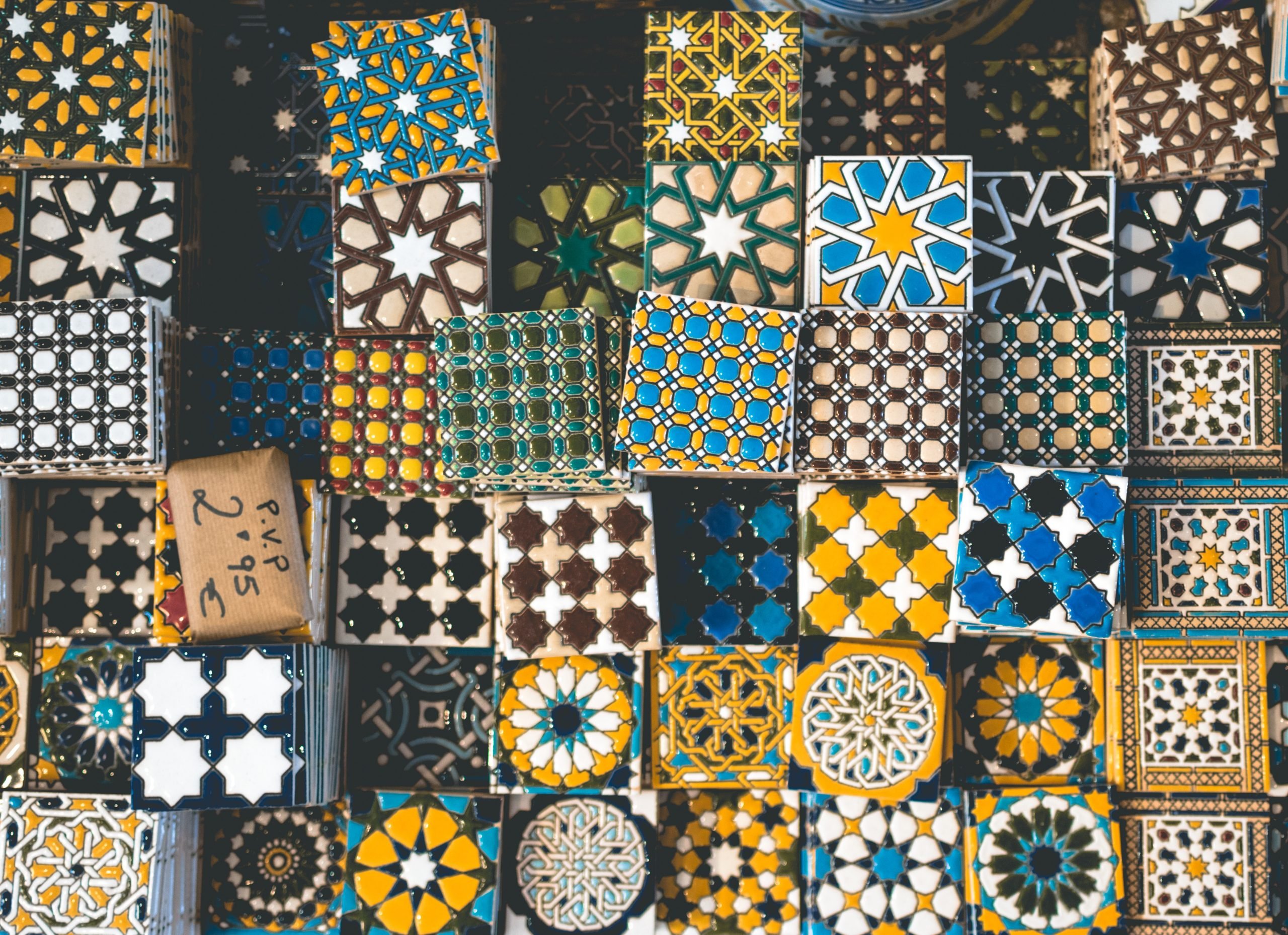Welcome to the captivating world of Portuguese craftsmanship, where tradition meets artistry in a breathtaking dance of skill and precision. Today, we delve into “Acamento” – a term that embodies the intricate art of finishing that defines many beloved artisanal creations from Portugal. From the delicate curves of handcrafted ceramics to the flawless edges of finely carved wood, Acamento is more than just a technique; it’s the soul that breathes life into every piece. Join us as we explore how this meticulous finishing process elevates everyday objects to extraordinary works of art, revealing the passion and dedication poured into each creation by skilled artisans. Whether you’re an admirer of fine crafts or simply curious about cultural practices, understanding Acamento will deepen your appreciation for the beauty woven into Portugal’s rich artistic heritage!
Introduction
Imagine walking through a bustling market in Portugal, surrounded by vibrant colors and intricate designs. Each handmade piece tells a story, reflecting the rich tapestry of Portuguese culture. At the heart of this artistry lies a concept known as “acamento.” This term encompasses more than just finishing touches; it represents dedication to craftsmanship and an unwavering attention to detail that elevates ordinary items into extraordinary works of art.
But what exactly is acamento? It’s the magic that transforms raw materials into beautiful creations, showcasing not only skill but also tradition. As we dive deeper into this fascinating aspect of Portuguese craftsmanship, you’ll discover how acamento adds value and uniqueness to every handmade product. Let’s explore its history, techniques, and relevance in both traditional crafts and modern design.
The history and cultural significance of finishing in Portuguese craftsmanship
The art of finishing, or “acamento,” holds a deep-rooted place in Portuguese craftsmanship. This practice dates back centuries and is intertwined with the nation’s rich cultural heritage. Traditionally, artisans poured their hearts into every piece they created. Finishing was not merely an afterthought but a reflection of skills passed down through generations.
In Portugal, finishing techniques often varied by region, influenced by local materials and historical context. Craftsmen embraced each detail as part of their identity and artistry. Moreover, acamento embodies the spirit of community collaboration. Families would come together to refine products, ensuring that each item told a story rooted in tradition.
As globalization increases accessibility to mass-produced goods, understanding this art form becomes vital for preserving cultural significance—allowing future generations to appreciate its value fully.
Different techniques and materials used in acamento
Acamento showcases a variety of techniques and materials that highlight the artisan’s skill. Each method reflects a deep understanding of texture, color, and form. In woodworking, artisans often utilize joinery techniques like dovetailing or mortise and tenon. These details not only provide strength but also elevate aesthetics, making each piece unique.
Pottery involves glazing processes such as sgraffito or majolica. These methods create intricate designs while enhancing the clay’s natural beauty. The finishing touch adds depth and character to every tile. Tile-making embraces hand-painting and relief work. Artisans use vibrant glazes to bring their visions to life on ceramic surfaces. This practice ensures that no two tiles are ever alike.
Materials play a crucial role in acamento as well. From locally sourced woods to rich pigments for glazing, everything is chosen with care. This attention to detail defines Portuguese craftsmanship at its finest. Examples of acamento in traditional Portuguese crafts such as pottery, woodworking, and tile-making
Acamento plays a vital role in elevating traditional crafts.
Take pottery, for instance. Artisans meticulously shape clay into stunning forms, but it’s the finishing touches that truly captivate. A glossy glaze or intricate hand-painted details can transform a simple bowl into a masterpiece.
Woodworking also showcases this art beautifully. Craftsmen carve elegant designs onto furniture pieces and then finish them with oils or waxes that enhance the wood’s natural hues. This attention to detail makes each item unique and rich in character.
Tile-making further exemplifies acamento through vibrant patterns and textures. The final touches—whether it’s applying a protective sealant or arranging tiles into elaborate mosaics—bring these colorful creations to life.
Every craft reflects a deep respect for tradition while showcasing individual artistry through precise finishing techniques. Each piece tells its own story, steeped in culture and history.
How acamento adds value and uniqueness to handmade products
Acamento breathes life into handmade products. It’s the final touch that transforms an ordinary item into a work of art. By focusing on meticulous finishing, artisans create pieces that tell a story.
This attention to detail sets each product apart. Whether it’s a smooth pottery glaze or intricately carved wood, acamento showcases the skill and dedication behind every creation. These elements resonate with consumers who appreciate authenticity.
Moreover, unique finishes can elevate the aesthetic appeal of everyday items. A beautifully finished piece invites admiration and sparks conversation. It becomes more than just functional; it embodies craftsmanship and passion.
In today’s market, where mass production often reigns, acamento offers individuality. Each handcrafted item carries its own character—flaws included—that make it special. This personal connection is what many modern buyers seek in their purchases.
Modern interpretations of acamento in contemporary design and fashion
Modern interpretations of acamento are reshaping the landscape of contemporary design and fashion. Designers today embrace this traditional craftsmanship, infusing their work with a sense of authenticity and artistry.
In textiles, intricate stitching techniques draw inspiration from historic practices while incorporating modern materials. This creates a unique blend that speaks to both heritage and innovation.
Furniture makers have also adapted acamento principles, focusing on meticulous detailing that elevates simplicity into art. The result is pieces that tell stories through their finishes, inviting admiration for both form and function.
Fashion designers explore these concepts by emphasizing finishing touches—hand-stitched embellishments or artisanal dyeing methods give garments an exclusive feel.
These interpretations not only celebrate Portuguese culture but also attract consumers seeking individuality in mass-produced markets. They highlight how timeless techniques can resonate with modern aesthetics, creating a vibrant dialogue between past and present.
Tips for incorporating acamento into your own crafting projects
Incorporating acamento into your crafting projects can elevate your work significantly. Start by focusing on the details. Little touches such as intricate stitching or careful paint application will reflect mastery.
Experiment with traditional materials like clay, wood, or ceramic tiles. Each medium offers unique finishing techniques that enhance texture and appearance. For instance, a polished glaze can transform pottery pieces into stunning showstoppers.
Pay attention to color harmony in your designs. Choose shades that complement each other for a balanced look, similar to what you find in classic Portuguese crafts. Don’t shy away from mixing modern elements with traditional finishes. This fusion can create an exciting contrast and showcase your creative flair.
Lastly, always take time to refine and perfect every aspect of your work. The patience invested in detailing is what truly embodies the spirit of acamento.
Conclusion
Understanding acamento is vital for truly appreciating Portuguese craftsmanship. This art of finishing transcends mere aesthetics; it embodies the soul of a craft. When artisans dedicate themselves to acamento, they preserve traditions that have shaped Portugal’s culture for centuries.
The meticulous attention to detail in techniques like smoothing edges or applying glazes enhances not only the visual appeal but also the tactile experience of handmade items. Each piece tells a story rooted in history and personal artistry, making every creation unique.
As contemporary designers explore modern interpretations, they draw inspiration from these age-old practices, breathing new life into crafts. The blend of tradition and innovation opens doors for creative exploration while maintaining respect for cultural heritage.
By recognizing the importance of acamento, we deepen our appreciation for handmade products and support sustainable crafting practices. It encourages us to value quality over quantity in an increasingly mass-produced world. Engaging with this aspect enriches our understanding and connection to Portuguese craftsmanship as a whole.

